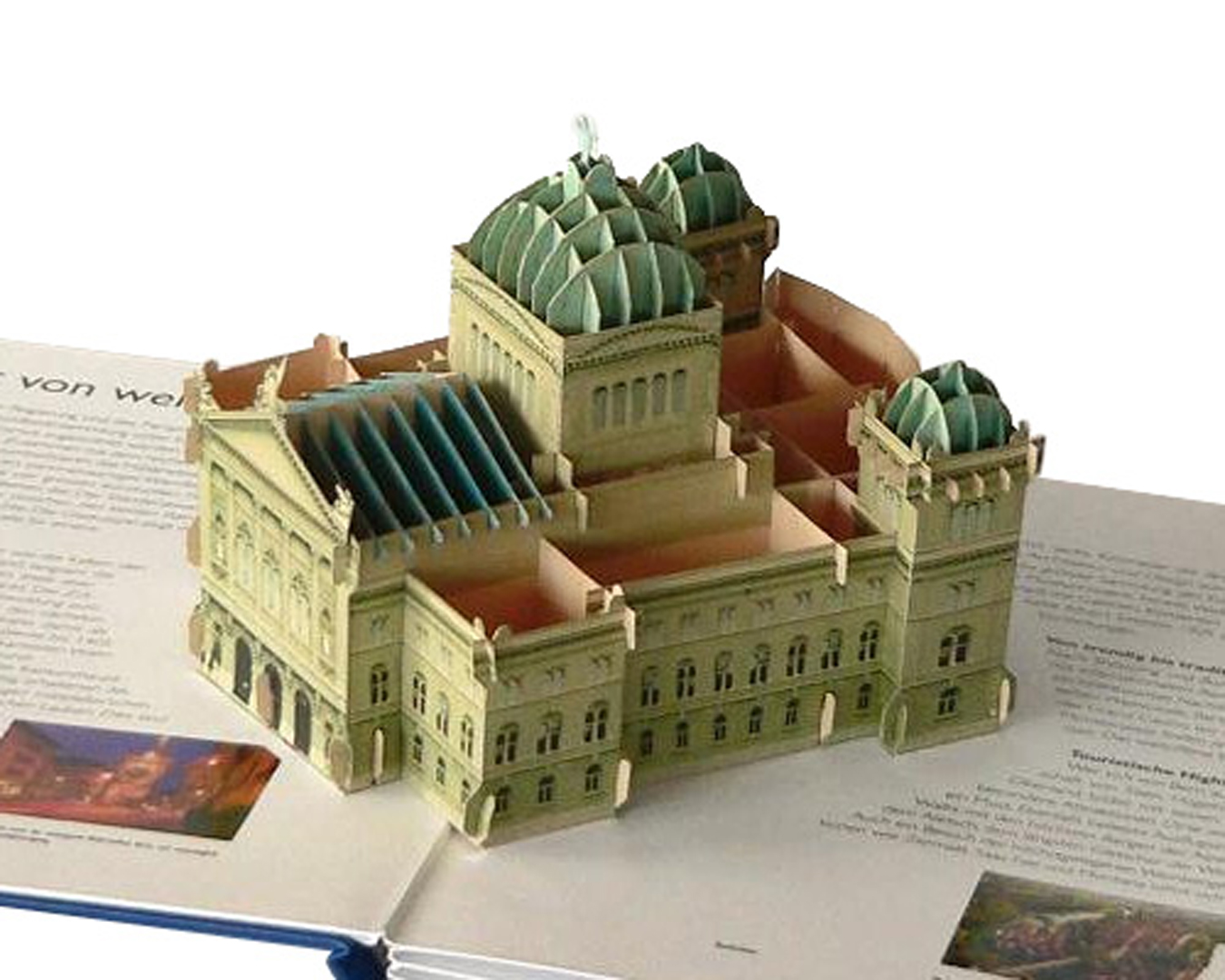“A geometric study of v-style pop-ups: theories and algorithms” by Li, Ju, Gu and Hu
Conference:
Type(s):
Title:
- A geometric study of v-style pop-ups: theories and algorithms
Presenter(s)/Author(s):
Abstract:
Pop-up books are a fascinating form of paper art with intriguing geometric properties. In this paper, we present a systematic study of a simple but common class of pop-ups consisting of patches falling into four parallel groups, which we call v-style pop-ups. We give sufficient conditions for a v-style paper structure to be pop-uppable. That is, it can be closed flat while maintaining the rigidity of the patches, the closing and opening do not need extra force besides holding two patches and are free of intersections, and the closed paper is contained within the page border. These conditions allow us to identify novel mechanisms for making pop-ups. Based on the theory and mechanisms, we developed an interactive tool for designing v-style pop-ups and an automated construction algorithm from a given geometry, both of which guaranteeing the pop-uppability of the results.
References:
1. Belcastro, S., and Hull, T. 2002. Modelling the folding of paper into three dimensions using affine transformations. Linear Algebra and its Applications 348, 273–282.Google Scholar
2. Birmingham, D. 1997. Pop Up! A Manual of Paper Mechanisms. Tarquin Publications, UK.Google Scholar
3. Carter, D. 1999. The Elements of Pop-up. Little Simon, New York.Google Scholar
4. Demaine, E., and O’Rourke, J. 2007. Geometric Folding Algorithms: Linkages, Origami, Polyhedra. Cambridge University Press, Cambridge. Google Scholar
5. Glassner, A. 2002. Interactive pop-up card design, part 1. IEEE Comput. Graph. Appl. 22, 1, 79–86. Google ScholarDigital Library
6. Glassner, A. 2002. Interactive pop-up card design, part 2. IEEE Comput. Graph. Appl. 22, 2, 74–85. Google ScholarDigital Library
7. Hara, T., and Sugihara, K. 2009. Computer aided design of pop-up books with two-dimentional v-fold structures. In 7th Japan Conference on Computational Geometry and Graphs.Google Scholar
8. Hendrix, S. L., and Eisenberg, M. A. 2006. Computer-assisted pop-up design for children: computationally enriched paper engineering. Adv. Technol. Learn. 3, 2, 119–127. Google ScholarDigital Library
9. Hiner, M. 1985. Paper Engineering. Tarquin Publications, UK.Google Scholar
10. Huffman, D. A. 1976. Curvature and creases: A primer on paper. IEEE Trans. Computers C-25, 1010–1019. Google Scholar
11. Hull, T. 2006. Project Origami: Activities for Exploring Mathematics. A. K. Peters.Google ScholarCross Ref
12. Ju, T. 2004. Robust repair of polygonal models. ACM Trans. Graphics 23, 3, 888–895. Google ScholarDigital Library
13. Lee, Y. T., Tor, S. B., and Soo, E. L. 1996. Mathematical modelling and simulation of pop-up books. Computers & Graphics 20, 1, 21–31.Google ScholarCross Ref
14. Li, X.-Y., Shen, C.-H., Huang, S.-S., Ju, T., and Hu, S.-M. 2010. Popup: automatic paper architectures from 3d models. ACM Transactions on Graphics 29, 4, 111:1–9. Google ScholarDigital Library
15. Mitani, J., and Suzuki, H. 2003. Computer aided design for 180-degree flat fold origamic architecture with lattice-type cross sections. Journal of graphic science of Japan 37, 3, 3–8.Google ScholarCross Ref
16. Mitani, J., and Suzuki, H. 2004. Computer aided design for origamic architecture models with polygonal representation. In CGI ’04: Proceedings of the Computer Graphics International, IEEE Computer Society, Washington, DC. USA, 93–99. Google Scholar
17. Mitani, J., Suzuki, H., and Uno, H. 2003. Computer aided design for origamic architecture models with voxel data structure. Transactions of Information Processing Society of Japan 44, 5, 1372–1379.Google Scholar
18. Okamura, S., and Igarashi, T. 2009. An interface for assisting the design and production of pop-up card. Lecture Notes in Computer Science 5531, 2, 68–78. Google ScholarDigital Library
19. O’Rourke, J. 2011. How to Fold It: The Mathematics of Linkages, Origami, and Polyhedra. Cambridge University Press, UK.Google Scholar
20. Uehara, R., and Teramoto, S. 2006. The complexity of a pop-up book. In 18th Canadian Conference on Computational Geometry.Google Scholar




